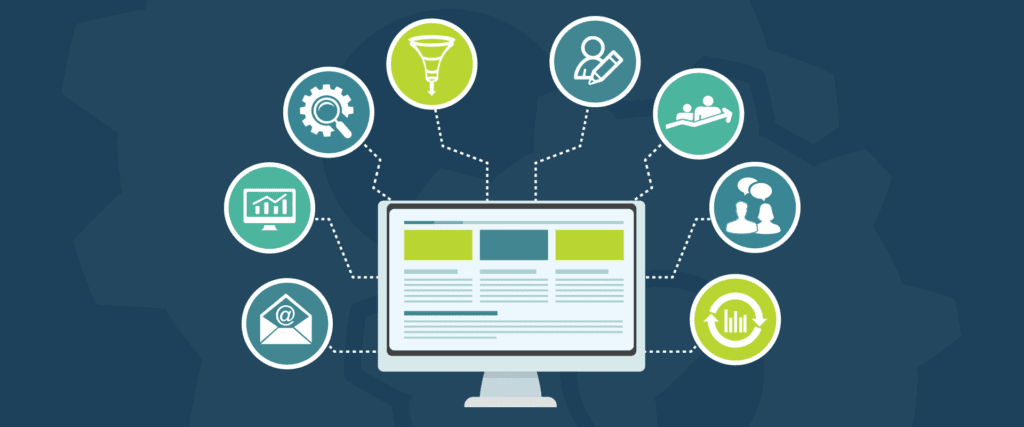Digital marketers are in charge of driving brand awareness and lead generation through all the digital channels – both free and paid — at the company’s disposal. These channels include social media, the company’s own website, search engine rankings, email, display advertising, and the company’s blog. The digital marketer focuses on a different key performance indicator (KPI) for each channel so they can properly measure the company’s performance across each one. Digital marketing is carried out across many marketing roles today. In small companies, one generalist might own many of the digital marketing tactics described above at the same time. In larger companies, these tactics have multiple specialists that each focus on just one or two of the brand’s digital channels. Here are some examples of these specialists:
The best digital marketers have a clear picture of how each digital marketing campaign supports their overarching goals. And depending on the goals of their marketing strategy, marketers can support a larger campaign through free and paid channels at their disposal. A content marketer, for example, can create a series of blog posts that serve to generate leads from a new ebook the business recently created. The company’s social media marketer might then help promote these blog posts through paid and organic posts on the business’s social media accounts. Perhaps the email marketer creates an email campaign to send those who download the ebook more information on the company. Following are some of the most common digital marketing tactics and the channels involved-
Search Engine Optimization (SEO): This is the process of optimizing a website to “rank” higher in search engine results pages, thereby increasing the amount of organic (or free) traffic your website receives. The channels that benefit from SEO include Websites, Blogs, and Infographics.
Social Media Marketing: This practice promotes your brand and your content on social media channels to increase brand awareness, drive traffic, and generate leads for your business. The channels you can use in social media marketing include Facebook, Twitter, LinkedIn, Instagram, Snap Chat, and Pinterest.
Content Marketing: It denotes the creation and promotion of content assets for the purpose of generating brand awareness, traffic growth, lead generation, and customers. The channels that can play a part in your content marketing strategy include Blog posts, ebooks and whitepapers, Infographics, Online brochures, and look books.
Affiliate Marketing: This is a type of performance-based advertising where you receive a commission for promoting someone else’s products, or services on your website. Affiliate marketing channels include Hosting video ads through the YouTube Partner Program and Posting affiliate links from your social media accounts.
Native Advertising: Native advertising refers to advertisements that are primarily content-led and featured on a platform alongside other, non-paid content. Buzz Feed-sponsored posts are a good example, but many people also consider social media advertising to be “native” – Facebook advertising and Instagram advertising.
Marketing Automation: Marketing automation refers to the software that serves to automate your basic marketing operations. Many marketing departments can automate repetitive tasks they would otherwise do manually, such as Email newsletters, Social media post scheduling, Contact list updating, Lead-nurturing workflows, Campaign tracking, and reporting.
Pay-Per-Click (PPC): PPC is a method of driving traffic to your website by paying a publisher every time your ad is clicked. One of the most common types of PPC is Google Ad Words, which allows you to pay for top slots on Google’s search engine results pages at a price “per click” of the links you place. Other channels where you can use PPC mainly include Paid ads on Facebook, Promoted Tweets on Twitter, and Sponsored Messages on LinkedIn.
Email Marketing: Companies use email marketing as a way of communicating with their audiences. Email is often used to promote content, discounts, and events, as well as to direct people toward the business’s website.
The types of emails you might send in an email marketing campaign include Blog subscription newsletters, Follow-up emails to website visitors who downloaded something, Customer welcome emails, Holiday promotions to loyalty program members, Tips or similar series emails for customer nurturing.
Inbound Marketing: Inbound marketing refers to the “full-funnel” approach to attracting, engaging, and delighting customers using online content. You can use every digital marketing tactic listed above throughout an inbound marketing strategy.
Online PR: Online PR is the practice of securing earned online coverage with digital publications, blogs, and other content-based websites. It’s much like traditional PR but in the online space. The channels you can use to maximize your PR efforts include Reporter outreach via social media Engaging online reviews of your company, and Engaging comments on your personal website or blog.





